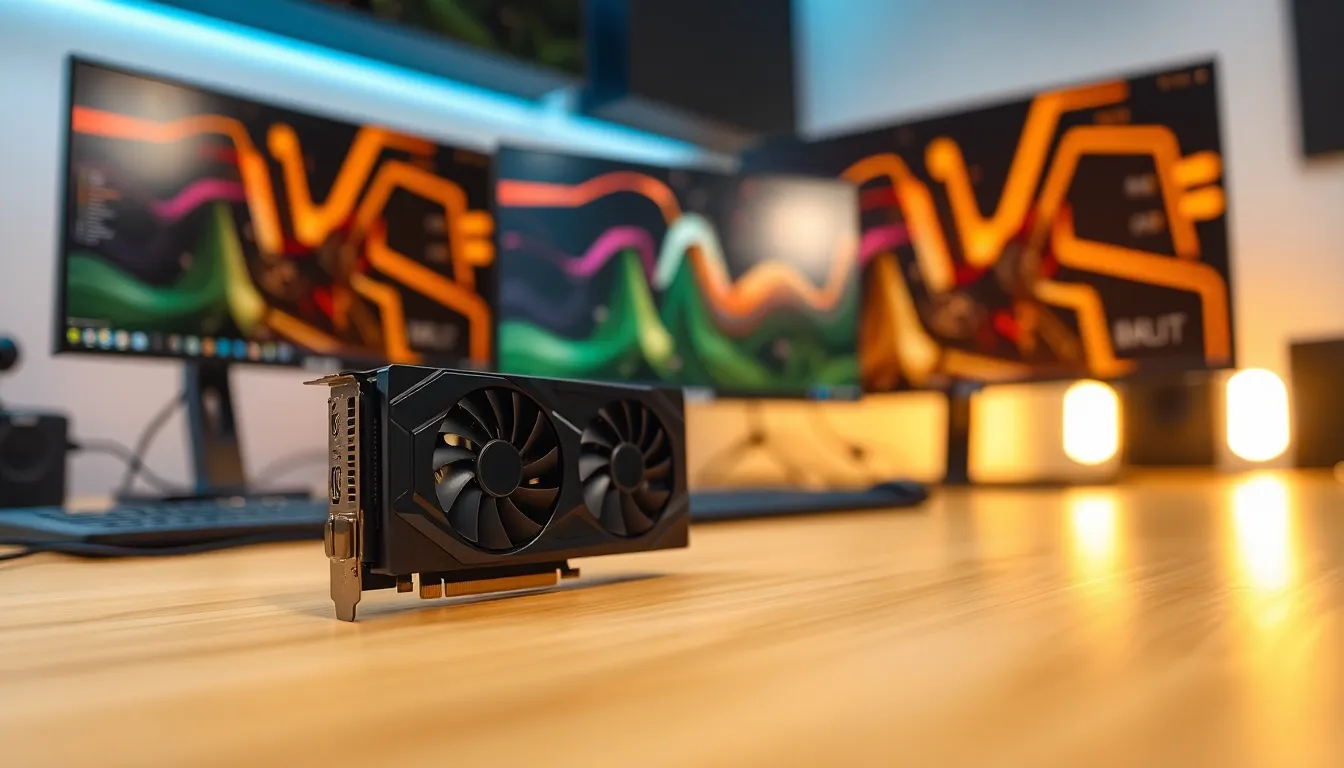Table of Contents
ToggleIn the fast-paced world of gaming, every millisecond counts. Imagine charging into battle only to be greeted by lag that feels like a slow-motion replay of your worst nightmare. It’s enough to make even the most seasoned gamer throw their controller in frustration. But fear not! With some clever FPS optimization tips, players can transform their gaming experience from a laggy slog to a smooth, buttery adventure.
Understanding FPS Optimization
Optimizing frames per second (FPS) greatly enhances gaming experiences. Higher frame rates lead to smoother graphics and improved responsiveness.
Importance of Frame Rates
Frame rates play a crucial role in gameplay quality. Higher FPS results in seamless motion, enabling better control and accuracy in action games. Games with 60 FPS or above typically offer a competitive edge. Consistent frame rates reduce motion blur and improve visual clarity. Enhancing frame rates creates a more immersive atmosphere, which positively impacts overall player satisfaction.
Common Issues Affecting FPS
Various factors influence FPS, often resulting in performance drops. Hardware limitations often include insufficient RAM or outdated graphics cards. These limitations directly impact rendering capabilities. Background applications consume resources, further reducing available processing power. Temperature issues can lead to thermal throttling, decreasing system performance. Network connectivity also plays a significant role, as poor connections can result in increased latency and decreased FPS. Addressing these issues ensures improved gaming performance and a more enjoyable experience.
Hardware Considerations

Hardware plays a crucial role in FPS optimization. Upgrading and configuring components enhances gaming performance significantly.
Upgrading Your Graphics Card
Upgrading a graphics card often yields the most noticeable improvements in gaming performance. Higher-end GPUs provide improved rendering capabilities, allowing higher resolutions and settings. Advanced graphics cards support technologies like ray tracing, enhancing visual quality. Selecting a card that meets game requirements ensures smoother gameplay. Consider power supply compatibility when upgrading. Popular options in 2023 include NVIDIA’s RTX series and AMD’s RX series, known for excellent performance metrics.
Optimizing Your CPU
Optimizing the CPU enhances overall system performance for gaming. A faster processor improves frame rates, reducing bottlenecks. Choosing a multi-core CPU can significantly benefit gaming performance, particularly for modern titles. Cooling solutions are vital; they prevent throttling and maintain consistent performance under load. Prioritize high clock speeds and multiple cores for a balance of performance in various games. Utilizing CPU management tools helps maximize utilization, ensuring the gaming experience remains smooth and responsive.
Software Optimization Techniques
Optimizing software settings can significantly boost FPS during gameplay. Making specific adjustments enhances performance and provides smoother visuals.
Game Settings Adjustments
Lowering the resolution can instantly improve frame rates. Players may also want to disable unnecessary visual effects, such as shadows and anti-aliasing. Reducing in-game details decreases the graphical load on hardware. Implementing frame rate limits prevents sudden drops during intense moments. Utilizing performance modes in-game settings can prioritize speed over graphics quality for a more responsive experience.
Background Application Management
Managing background applications ensures that resources focus solely on gaming. Closing unnecessary programs frees up CPU and RAM. Disabling startup applications before launching a game can further enhance performance. Players might also consider adjusting system settings to prevent updates from running during gameplay. Monitoring resource usage through task managers helps identify and eliminate bottlenecks, providing smoother and lag-free experiences.
System Maintenance Tips
Maintaining a system contributes to optimal FPS in gaming. Regular maintenance ensures hardware and software run efficiently.
Regular Updates and Drivers
Install updates for the operating system and game software. Staying current with these updates helps fix bugs while improving performance. Graphics card drivers require particular attention since they provide critical optimizations for new games. Check manufacturers’ websites for the latest drivers and install them accordingly. Updates can enhance visual fidelity and speed, especially in demanding titles. Lastly, automated update settings can save time and ensure the system never falls behind.
Disk Cleanup and Defragmentation
Performing disk cleanup removes unnecessary files that occupy valuable storage space. Regularly clearing cache, temporary files, and system junk frees up resources, improving game loading times. Defragmentation reorganizes fragmented data on traditional hard drives, enhancing read and write speeds. Scheduling defragmentation every few months is beneficial for performance sustainability. Solid-state drives, however, do not require this process. Instead, maintaining free space on SSDs contributes to longevity and efficiency.
Optimizing FPS is essential for any gamer looking to elevate their experience. By addressing hardware and software issues players can significantly enhance performance and enjoy smoother gameplay. Whether it’s upgrading components or fine-tuning settings every step taken contributes to reducing lag and improving responsiveness.
Regular maintenance also plays a crucial role in sustaining optimal FPS. Keeping systems updated and managing resources effectively ensures that players can fully immerse themselves in their favorite games without interruptions. Implementing these strategies not only enhances gaming performance but also boosts overall satisfaction.







